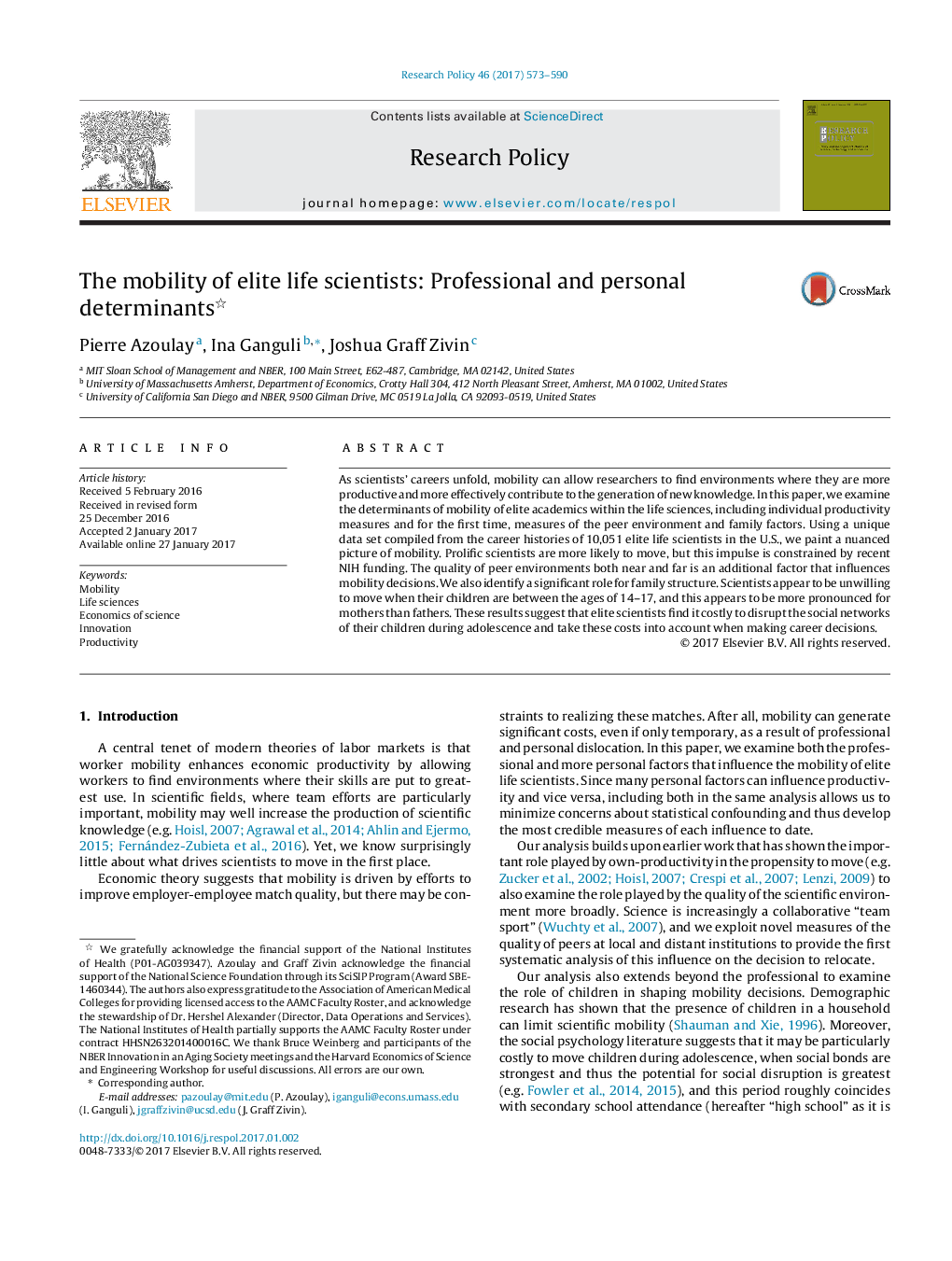| Article ID | Journal | Published Year | Pages | File Type |
|---|---|---|---|---|
| 5104013 | Research Policy | 2017 | 18 Pages |
Abstract
As scientists' careers unfold, mobility can allow researchers to find environments where they are more productive and more effectively contribute to the generation of new knowledge. In this paper, we examine the determinants of mobility of elite academics within the life sciences, including individual productivity measures and for the first time, measures of the peer environment and family factors. Using a unique data set compiled from the career histories of 10,051 elite life scientists in the U.S., we paint a nuanced picture of mobility. Prolific scientists are more likely to move, but this impulse is constrained by recent NIH funding. The quality of peer environments both near and far is an additional factor that influences mobility decisions. We also identify a significant role for family structure. Scientists appear to be unwilling to move when their children are between the ages of 14-17, and this appears to be more pronounced for mothers than fathers. These results suggest that elite scientists find it costly to disrupt the social networks of their children during adolescence and take these costs into account when making career decisions.
Related Topics
Social Sciences and Humanities
Business, Management and Accounting
Business and International Management
Authors
Pierre Azoulay, Ina Ganguli, Joshua Graff Zivin,
